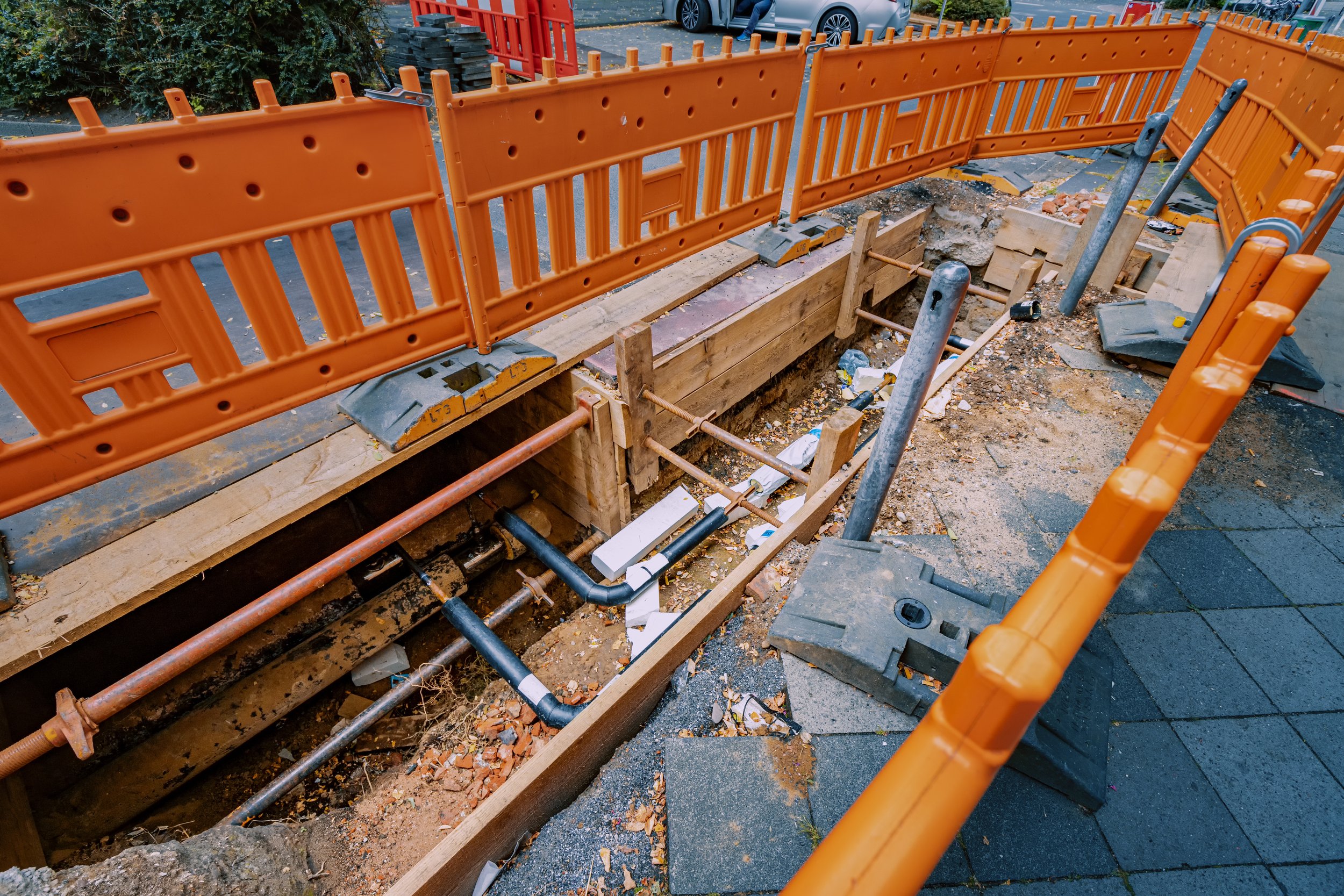What is the potential Return on Investment from using Subsurface Utility Engineering in infrastructure projects?
Asset owners often cite budget constraints as a barrier to undertaking comprehensive Subsurface Utility Engineering (SUE) investigations. At Reveal, we want to challenge the notion that funding should be a prohibitive factor. Responsible budget allocation is crucial for any successful infrastructure development, and recent research has found that the return on investment (ROI) for many infrastructure projects utilizing SUE practices is over double the original investment. Project founders should be asking their consultants and contractors to justify why they are not commissioning best-practice SUE investigations as a routine part of the concept and design process.
The Risks Of The Unknown
Understanding the underground environment is foundational for any infrastructure project, and neglecting it can lead to severe consequences throughout the project lifecycle. Although engineers make efforts to collect historical utility plans from asset owners, consolidate them digitally, and supplement them with invasive potholing, relying solely on these 'as-builts' and traditional means typically proves inadequate. Historical utility plans are notorious for being incomplete and unreliable due to insufficient accuracy at the time of documenting the asset installation, and gradual changes to the assets over time, which are not captured at all.
Initiating projects without a comprehensive understanding of subsurface risks often results in utility strikes that lead to contract conflicts, delays, service disruptions, redesign work, injuries to workers, and tragically, even the loss of lives. Reveal's consistent findings indicate that approximately 40% of detections from utility locating in the field are not accounted for in any 'as-built' supplied by asset owners. This aligns with research from the University of Birmingham, UK, which found that 44% of plans were inaccurate or failed to show undocumented utilities.
Utility strikes carry major direct costs, both financially and in terms of project timelines. However, the true cost grows exponentially when accounting for the indirect costs to society. The ripple effect of these strikes extends to disruptions in public services, and transport networks, increased emergency response demands, environmental damage, and potential legal repercussions, as well as undermining public confidence in infrastructure development and leadership.
The Case for ROI from Subsurface Utility Engineering:
Research findings from the United States since the early 2000s have demonstrated consistent positive ROI figures on infrastructure projects that have undertaken comprehensive SUE practices.
Investing in SUE at the project's initiation can prevent unnecessary realignment costs, eliminate delays, and significantly reduce the risks associated with utility strikes. The following research demonstrates the ROI achieved by using SUE in several international studies that accumulatively analyze over 150 public and private infrastructure projects:
US Department of Transportation (USDOT) Cost Savings On Highway Projects Utilizing Subsurface Utility Engineering - Purdue University (1999):
Quantified savings of $4.62 for every $1.00 spent on SUE.
Identified two broad categories of savings – quantifiable and qualitative, with qualitative savings, such as avoiding disruption to the local communities, deemed significant and potentially more valuable.
U.S. DOT Federal Highway Administration; Evaluation of an Emerging Market in Subsurface Utility Engineering (2004):
Estimated a benefit of $12.23 for every $1 spent on SUE.
Highlighted significant contributors to cost savings, including a 37.1% reduced number of utility relocations and a 19.3% reduction in claims and change orders.
Ontario Sewer and Watermain Contractors Association, Subsurface Utility Engineering in Ontario: Challenges and Opportunities (2004):
The average ROI for SUE ranged from $1.98 to $6.59, with an average of $3.41 for each $1 spent.
Examined large infrastructure projects in Ontario, highlighting the practicality and financial benefits of SUE.
Pennsylvania Department of Transportation Subsurface Utility Engineering Manual, Unpublished (2007):
ROI of $21.00 for every $1.00 invested in SUE.
Results were significantly higher than previous research papers, as the study considered the maturation of SUE processes and possible indirect costs to the local communities.
Pennsylvania Department of Transportation: Evaluation of subsurface utility engineering for highway projects: Benefit-cost analysis (2012):
Revealed savings of $11.39 for every $1.00 spent on SUE.
Analyzed 22 projects, considering direct and indirect costs, showcasing the wide range of benefits, including:
40.33% reduction in project relocation costs due to providing accurate underground information in the early stages of design.
29.46% reduction in construction and design costs
9.59% reduction in redesign costs
Louisiana Department of Transportation and Development: Cost and Time Benefits for Using Subsurface Utility Engineering in Louisiana (2021)
Examined the potential benefits of SUE services in Louisiana DOTD projects.
Realized a cost savings of $2.73 for every $1 spent on SUE.
The study indicated that SUE is most applicable to larger, complex projects costing at least $3 million.
Conclusion:
The summary of these comprehensive studies provides a robust foundation for the argument that Subsurface Utility Engineering is not merely an expense but a strategic investment delivering substantial returns. The evidence emphasises the need for a change in thinking towards prioritising SUE investigations in infrastructure projects. Beyond immediate cost savings, SUE practices contribute to enhanced safety, reduced environmental impact, and improved overall project efficiency, thereby ensuring the long-term success and sustainability of infrastructure projects.
Call to Action:
So why is there still reluctance and apprehension from projects to invest in quality utility locating practices? The evidence is clear: the benefits far outweigh the costs. It's time for project stakeholders, policymakers, and industry professionals to recognise the transformative impact of proactive SUE practices, stop blaming a lack of funding, and make informed decisions that will maximise budgets.
Contact the Reveal team to find out how Subsurface Utility Engineering can support your project at hello@reveal.nz
#LookDeeper #sue #RoadInfrastructure #RevealTechnologies #Innovation



